Amazing 16 Best Mid-Range Serengeti Safari Lodges & Camps.

The Serengeti National Park, Tanzania’s jewel, beckons with its vast plains, iconic wildlife, and unforgettable landscapes with staying in best mid-range Serengeti Safari Lodges & Camps. While luxury experiences abound, mid-range options offer incredible value, immersing you in the wilderness without breaking the bank. So, pack your binoculars, ignite your spirit, and get ready to explore these 11 best mid-range Serengeti lodges and camps: 1. Madikwe Luxury Bush Camp (Central & Western Serengeti): Embrace authentic Africa in this intimate, eco-friendly camp. Spacious tents boast private verandas, offering mesmerizing savannah views. Expertly guided game drives, bush walks, and sundowners paint an unforgettable picture of the Serengeti. 2. Kubu Kubu Tented Lodge (Central Serengeti): Here are one of mid-range Serengeti safari lodges where you can savour the true Tanzanian safari experience in style and comfort. Nestled beneath acacia trees, Kubu Kubu offers traditional canvas tents with ensuite bathrooms. Best Mid-Range Serengeti Safari Lodges & Camps offering you to relax in the plunge pool or unwind in the library after thrilling game drives seeking lions, elephants, and the Great Migration. 3. Acacia Central Serengeti Camp (Central Serengeti): Immerse yourself in the heart of the wilderness at this eco-conscious camp. Raised tents with modern amenities provide comfort, while the infinity pool and campfire create lasting memories. Game drives, bush walks, and hot air balloon safaris bring the Serengeti alive. 4. Lobo Wildlife Lodge (Western Corridor): This lodge, built around a natural spring, offers breathtaking views. Spacious rooms with balconies overlook the watering hole, attracting diverse wildlife. Unwind by the pool, enjoy guided safaris, and witness the awe-inspiring Great Migration. 5. Sametu Camp (Northern Serengeti): Experience genuine luxury in this intimate, mobile camp. Spacious tents boast ensuite bathrooms and verandas, perfect for stargazing. Expert-led game drives, bush walks, and cultural interactions unveil the secrets of the Serengeti. 6. Mara Kati Kati Tented Camp (Northern Serengeti): Become one with nature at this mobile camp offering a true wilderness experience. Best Mid-Range Serengeti Safari Lodges & Camps offer comfortable tents with ensuite bathrooms create a cozy home base. Immerse yourself in game drives, bush walks, and hot air balloon safaris, witnessing the drama of the Great Migration. 7. Kirawira Serena Camp (Western Corridor): Experience sophisticated comfort in this lodge perched on a rocky kopje. Elegant rooms with balconies offer stunning views. Relax by the pool, indulge in delicious meals, and embark on exhilarating game drives and bush walks in search of diverse wildlife. 8. Lemala Ngorongoro Ndutu Lodge (Western Corridor): Embrace contemporary style in this lodge overlooking Lake Ndutu. Spacious rooms with balconies provide breathtaking views. Enjoy guided game drives, bush walks, and cultural visits, experiencing the essence of the Serengeti and surrounding Maasai villages. 9. Ikoma Safari Camp (Central Serengeti): Combine comfort and adventure at this eco-friendly camp. Raised tents with modern amenities offer stunning views. Unwind by the pool, embark on guided game drives and bush walks, and witness the mesmerizing spectacle of the Great Migration. 10. Serengeti Simba Lodge: Simba Lodge provides a unique blend of modern comfort and traditional charm. Its location along the migration route ensures incredible wildlife sightings, while the lodge’s well-appointed rooms offer a cozy retreat after a day of exploration. 11. Serengeti Pioneer Camp: A throwback to the golden era of safari, Pioneer Camp exudes classic elegance. Tucked away in a secluded area, the camp offers exclusive game viewing opportunities. The vintage décor, combined with modern amenities, provides a charming and comfortable retreat. 12. Thorn Tree Camp: Thorn Tree Camp boasts a prime location in the central Serengeti. The camp’s tents are designed for both comfort and a close-to-nature experience. Guests can relish delicious cuisine while marveling at the vast plains and the abundant wildlife. 13. Elewana Klein’s Camp (Northern Serengeti): Savor classic safari glamour at this historic camp. Spacious tents with ensuite bathrooms offer a touch of luxury. Enjoy guided game drives, bush walks, and hot air balloon safaris, experiencing the magic of the Great Migration. 14. Serengeti Sopa Lodge: Offering a touch of luxury in the wild, Serengeti Sopa Lodge features spacious rooms with panoramic views. The lodge’s design seamlessly blends with the natural surroundings, providing a tranquil atmosphere after a day of exciting game drives. 15. Serena Migration Camp (Northern Serengeti): Follow the Great Migration at this mobile camp, strategically positioned in prime viewing areas. Comfortable tents with ensuite bathrooms provide a cozy haven. Embark on daily game drives, bush walks, and balloon safaris, witnessing the wildebeest’s epic journey. 16. Serengeti Kati Kati Tented Camp: Nestled in the heart of the Serengeti, Kati Kati Tented Camp provides an authentic safari experience. The comfortable tents feature en-suite bathrooms, and the camp’s central location allows for excellent wildlife sightings during the Great Migration. Choosing Your Perfect Sanctuary: With so many options, consider your priorities: location (witnessing the Great Migration?), amenities (pool, spa?), and atmosphere (intimate camp, larger lodge?). Research prices, inclusions, and reviews to find your ideal match. Beyond the Lodge: Remember, the magic lies beyond the lodge walls. Prepare for early mornings, long game drives, and breathtaking encounters with nature. Respect wildlife, ask questions, and embrace the adventure. Let the Serengeti unfold its wonders, leaving you with memories that will last a lifetime
Best African Luxury Beach Resorts
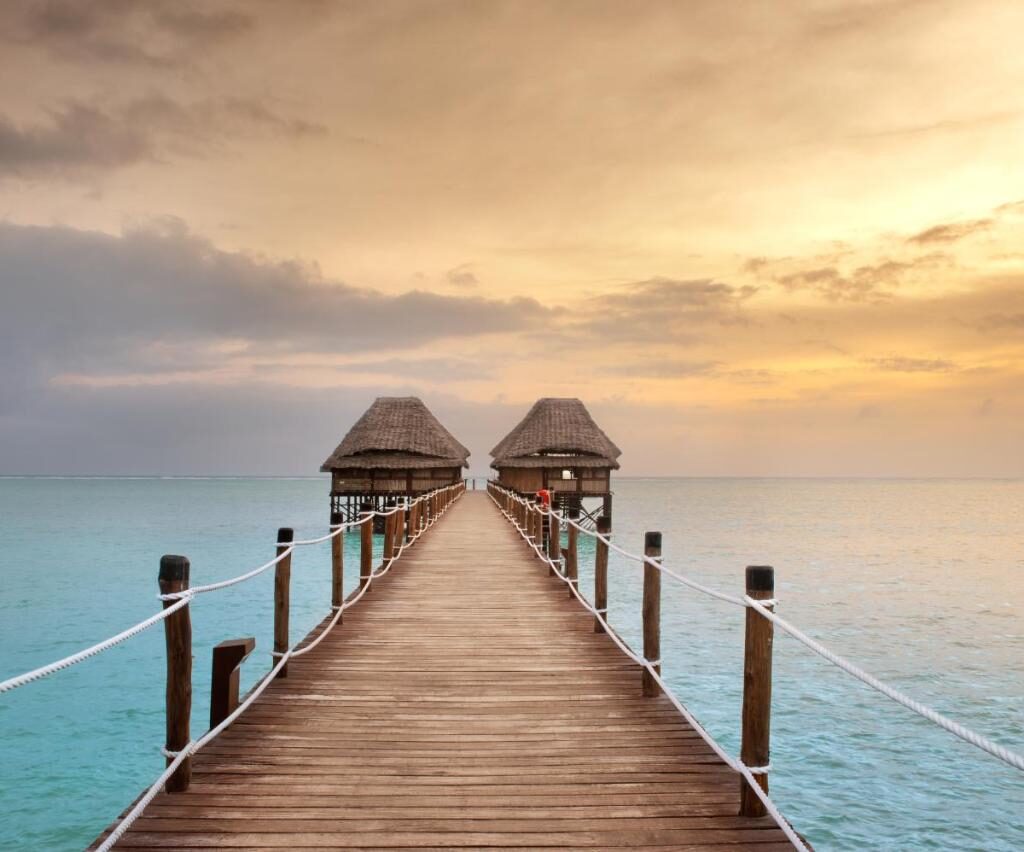
Unveiling Paradise: Top 10 Luxury Beach Resorts in Africa all inclusive. Africa’s coastline stretches across continents, offering a kaleidoscope of landscapes and experiences. From the sapphire waters of the Indian Ocean to the turquoise embrace of the Atlantic, luxury beach resorts dot the shoreline, promising indulgence and rejuvenation. Here’s a glimpse into 10 havens where exquisite accommodation seamlessly blends with the magic of the African coast: 1. Zuri Zanzibar, Zanzibar, Tanzania: Nestled on Kendwa’s pristine beach, Zuri Zanzibar exudes effortless elegance. Stylish bungalows, suites, and villas offer private beachfront havens, complemented by a world-class spa, three restaurants, and endless water sports opportunities. 2. Diani Sea Resort, Diani Beach (Kenya): Immerse yourself in opulence steps away from the pristine sands of Diani Beach. Diani Sea Resort boasts opulent suites, private plunge pools, and a vibrant coral reef for snorkeling adventures. Savor culinary delights at world-class restaurants and unwind at the award-winning spa. 3. Constance Ephelia, Mahé (Seychelles): Nestled amidst lush vegetation on Mahé, Constance Ephelia embodies barefoot luxury. Spacious villas with private pools offer breathtaking ocean views. Explore coral reefs, indulge in water sports, or rejuvenate at the U Spa. Fine dining options cater to every palate. 4. Nungwi Beach Resort by Turaco, Zanzibar (Tanzania): Experience Zanzibar’s charm at this intimate beachfront resort. Nungwi Beach Resort offers elegantly designed rooms and villas with mesmerizing ocean views. Unwind by the infinity pool, explore turquoise waters with diving and snorkeling excursions, and savor authentic Swahili cuisine. 5. Meliá Zanzibar, Zanzibar (Tanzania): Embark on a journey of sensory awakening at Meliá Zanzibar. This haven features opulent suites with private balconies, a stunning infinity pool, and a world-class spa. Dive into vibrant coral reefs, learn kitesurfing, or relish international flavors at the resort’s restaurants. 5. Baobab Beach Resort, Diani Beach (Kenya): Embrace barefoot elegance at Baobab Beach Resort. Lush gardens frame stunning villas with private pools, offering tranquil havens steps away from the beach. Explore the vibrant marine life through diving and snorkeling, indulge in water sports, or indulge in culinary delights at the resort’s restaurants. 6. Royal Zanzibar Beach Resort, Zanzibar (Tanzania): Immerse yourself in Zanzibar’s cultural tapestry at Royal Zanzibar Beach Resort. Top 10 the most astonishing beach retreats in Africa. This haven features cool rooms and villas, nestled amidst tropical gardens leading to a pristine beach. Explore vibrant coral reefs, relax at the swim-up bar, or savor Swahili-inspired cuisine. 7. Santorini Mozambique, Vilanculos (Mozambique): Exuding Cycladic charm on the Mozambican coast, Santorini Mozambique offers a unique escape. Whitewashed villas with private pools and ocean views create a picturesque setting. Luxury beach resort to combine with African Safari? Dive into the Bazaruto Archipelago’s marine wonders, indulge in water sports, or savor fresh seafood at the resort’s restaurants. 8. Sarova Whitesands Beach Resort & Spa, Bamburi Beach, Mombasa (Kenya): Embrace Kenyan services at Sarova Whitesands Beach Resort & Spa. Sprawling gardens lead to a pristine beach, creating a serene haven. All Inclusive Resorts on the Beach in Africa. Spacious rooms and suites offer ocean vistas, while classic dining options tantalize your taste buds. Relax at the spa, explore nearby Mombasa, or indulge in water sports. 9. Serena Beach Resort & Spa, Mombasa (Kenya): Discover refined elegance at Serena Beach Resort & Spa. One of the Best African Luxury Beach Resorts. This haven features delux rooms and suites facing the Indian Ocean. Pamper yourself at the Maisha Spa, explore vibrant coral reefs, or indulge in delectable culinary experiences. 10. Tui Blue Bahari Zanzibar, Zanzibar (Tanzania): Experience vibrant energy at Tui Blue Bahari Zanzibar. This modern resort offers stylish rooms and suites, catering to families and couples alike. Splash in the infinity pool, explore Zanzibar’s cultural treasures, or savor international flavors at the resort’s restaurants. 11. Four Seasons Seychelles Desroches Island, Seychelles: Embark on a barefoot luxury adventure on this private island resort. Best African Luxury Beach Resorts. Spacious beachfront villas with private pools provide the ultimate escape. Explore lush rainforests, dive into vibrant coral reefs, or savor culinary delights under the stars. 12. Relais & Châteaux Paradis Plage Resort & Spa, Morocco: Discover tranquility amidst Morocco’s vibrant culture. Nestled on Agadir’s stunning beach, this haven offers charming riads, hammam treatments, and exquisite dining experiences. Explore bustling souks, ride camels on the beach, or unwind at the serene spa. 13. Moyo Island Paradise Resort, Zanzibar, Tanzania: Escape to a private island paradise on Pemba Island. The Top 12 Best Luxury Beach Resorts in Africa. Traditional Makuti-thatched bandas offer nice charm, while the pristine beach and turquoise waters beckon for exploration. Dive into coral reefs, soak up the sun, or savor fresh seafood under the stars. Remember, this is just a glimpse into the vast array of luxury beach resorts gracing Africa’s coastline. Each offers unique experiences, catering to diverse preferences and budgets. So, explore your options, pick your paradise, and prepare to be swept away by the magic of Africa’s shores.
12-Week Kilimanjaro Training Plan for Beginners
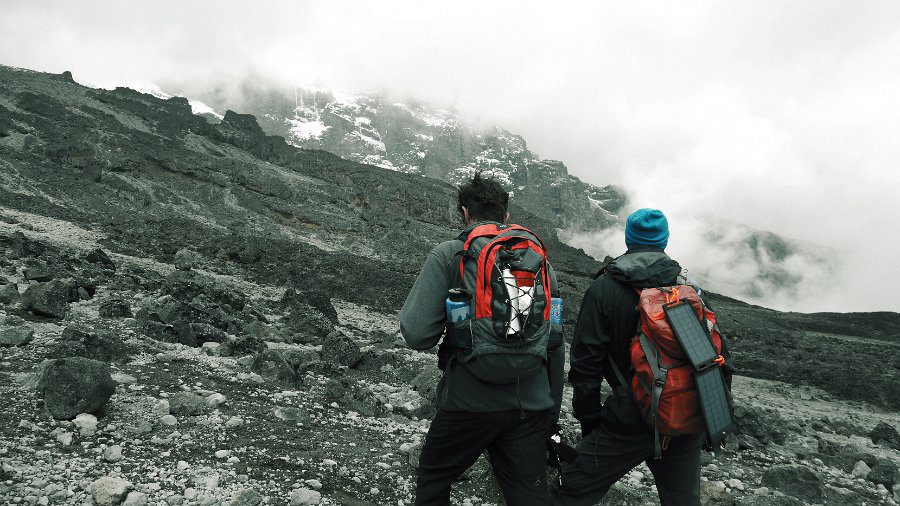
Kilimanjaro Training Plan for Beginners 12-Week. Conquering the Roof of Africa: A 12-Week Training Plan for Beginner Kilimanjaro Climbers. Standing at 19,341 feet (5,895 meters), Kilimanjaro isn’t just a mountain – it’s a challenge. Reaching the summit requires months of dedicated training, especially for those without extensive hiking experience. This 12-week plan will guide you through building the physical and mental strength to conquer Kilimanjaro, step by step. Before You Begin: This plan is a blueprint, but remember, your body is unique. Consult a doctor before starting any new exercise program, especially if you have underlying health conditions. They can tailor the plan to your fitness level and needs. Weeks 1 – 4 Weeks Before Climb: Building Your Base ✔Focus: Gradually increase cardiovascular endurance and leg strength. ✔Cardio: Start with 3-4 sessions per week of brisk walking or light jogging (30-45 minutes). Gradually increase duration and intensity as the weeks progress. Consider interval training for an extra push. ✔Strength Training: 2-3 sessions per week focusing on major muscle groups: legs, core, and back. Start with bodyweight exercises like squats, lunges, planks, rows, and push-ups. As you get stronger, add light weights or resistance bands. ✔Rest and Recovery: Schedule rest days for your body to rebuild. Prioritize good sleep, hydration, and a healthy diet. Weeks 5-8 Weeks Before Climb: Pushing Your Limits ✔Cardio: Up the ante with 4-5 sessions per week. Include longer hikes (2-3 hours) with moderate elevation gain. Simulate Kilimanjaro’s terrain with hill repeats or stair climbing. Maintain or slightly increase intensity. ✔Strength Training: Continue 2-3 sessions per week, gradually increasing weight or reps/sets. Add exercises like step-ups and calf raises to target specific climbing movements. ✔Rest and Recovery: Continue prioritizing rest, but consider active recovery days with light activities like yoga or swimming. 9 – 12 Weeks Before Climb: Peak Performance and Tapering ✔Cardio: Focus on quality over quantity with 3-4 sessions per week, including one longer (4-5 hours) hike with significant elevation gain. Maintain intensity but reduce duration slightly in the last two weeks (tapering). ✔Strength Training: Maintain your routine, but switch to lighter weights and higher reps for endurance. Prioritize core exercises for stability and balance on the mountain. ✔Rest and Recovery: Increase rest days and focus on mental preparation. Ensure proper hydration and nutrition to fuel your summit push. Beyond the Physical: ✔Practice with your backpack: Gradually increase the weight you carry on training hikes to get used to the feeling. ✔Invest in good hiking boots: Proper footwear is crucial for comfort and support on the mountain. ✔Acclimatize to altitude: If possible, spend time at high altitude before your climb to help your body adjust. ✔Mental preparation: Visualize yourself succeeding and develop strategies to cope with challenges. ✔Remember: This is your journey. 12-Week Kilimanjaro Training Plan for Beginners. Be flexible, adjust the plan to your progress, listen to your body, and most importantly, enjoy the training! With dedication and this 12-week guide, you’ll be well on your way to conquering Kilimanjaro and achieving your dream. Bonus Resources: Images for visualization: Brisk walking, light jogging, squats, lunges, planks, rows, push-ups, step-ups, calf raises, yoga, swimming.Links to additional training resources and Kilimanjaro climbing information. How far in advance should I plan Kilimanjaro? If you are planning to book a Kilimanjaro Climb, it is recommended to book your trip at least 6 to 9 months in advance. This will ensure that you have enough time to prepare for the experience of a lifetime. How long should you train for Kilimanjaro? Training for mountaineering focuses on building a sport-specific fitness developing cardiovascular endurance training, flexibility, and strength training. The training information here will help you arrive prepared for the mountain. Most people will need to train for a Kilimanjaro climb for at least 4-6 months. What level of fitness do you need to climb Kilimanjaro? You don’t need to be exceptionally fit, but you do need to get your body used to the particular demands of this hike. Otherwise, the first days will be so tiring that you will have no energy left when it counts. So, the best Kilimanjaro training is to simply walk. How many miles a day do you hike on Kilimanjaro? The full day is 12 – 14 hours of trekking and covers 11.2 miles/ 18.1km. 1,245m/ 4,084 feet up the mountain from Barafu or 1,095m/ 3,592 feet up from Kosovo Camp to the summit. You then have 2,795m/ 9,169 feet downhill, all on the same day. What is the best exercise for climbing Kilimanjaro? Every climber should engage in regular aerobic training to prepare for Kilimanjaro. 12-Week Kilimanjaro Training Plan for Beginners. Cardiovascular exercise or simply, ‘cardio’, can be exercises such as running, jogging, cycling, and even aerobic dance classes. What is the best training for Kilimanjaro? Kilimanjaro requires a mountain approach to training. Running will not cut it. We highly recommend mountain specific training, which means hiking uphill and downhill with a backpack building up the weight you carry. 70% of your training should be focused on the specific movement required for mountain trekking. When should I stop training before Kilimanjaro? Start aerobic and strength training 60-90 days before departure. Two weeks before departure, taper all training and focus on low-intensity workouts and stretching. Consider hiring a personal trainer to maximize benefits (we recommend Fit For Trips). How do I get in shape for Kilimanjaro? To sufficiently prepare for climbing Kilimanjaro, the best and perhaps only exercise you need to do is hiking – period. After all, that is what you will be doing on the mountain. Ideally, you should try to hike as much as possible on hills or mountains to simulate climbing Kilimanjaro. How do you weight train for Kilimanjaro? You will need to do some Strength Training for Kilimanjaro for better fitness and increase stamina. The main strength exercise is particularly for legs, core and upper body. The strength exercise includes: Lifting weights, using resistance bands, doing push ups, pull ups, crunches, leg squats and push up against walls.
Climbing Kilimanjaro in January
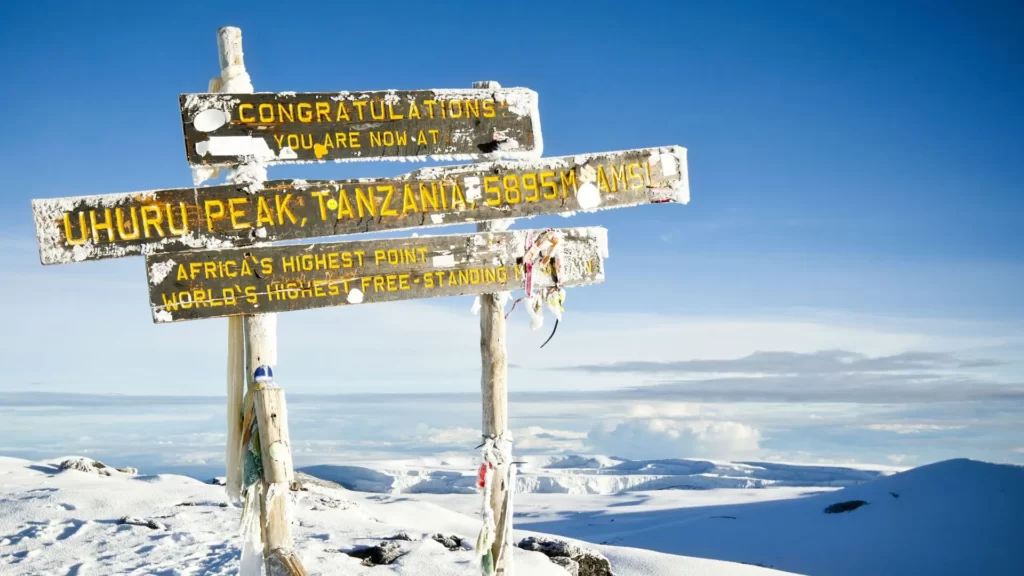
Scaling the Summit: Embracing Kilimanjaro’s Majesty in January. Mount Kilimanjaro, Africa’s crown jewel, beckons intrepid adventurers with its majestic peak and diverse landscapes. January, nestled within the dry season, presents an ideal time to conquer this behemoth, offering optimal weather conditions, stunning vistas, and a manageable level of crowds. Embracing Sunshine and Dry Trails: January sheds the rain clouds, ushering in clear skies and sunshine. Expect warm days perfect for trekking, with crisp nights demanding proper layering. Dry and well-maintained trails ease the journey, allowing you to focus on the breathtaking scenery and enjoy a comfortable trek. Witnessing Panoramic Vistas: Unobstructed by clouds, January unveils Kilimanjaro’s unparalleled beauty. Imagine capturing panoramic vistas of lush rainforest, volcanic plains, and glaciers sparkling under the African sun. These unforgettable snapshots will forever be etched in your memory. Ideal Kilimanjaro Climbing Weather Conditions in January February is characterized by relatively dry weather on Mount Kilimanjaro, creating favorable conditions for hikers. Daytime temperatures range from 50°F to 75°F (10°C to 24°C) at lower elevations, providing comfortable hiking conditions. However, as you ascend, temperatures can drop significantly, emphasizing the importance of proper layering and cold-weather gear. Finding Your Niche: While January attracts more hikers than the off-season, it’s not peak season. Enjoy a balance between solitude and camaraderie, giving you to connect with fellow adventurers while savoring moments of peaceful reflection amidst the stunning scenery. Challenging Yet Rewarding: Don’t underestimate the climb – Kilimanjaro demands physical and mental resilience. However, January’s pleasant weather makes the ascent more manageable, increasing your chances of summit success. Witnessing the sunrise from the “Roof of Africa” will be a reward unlike any other. Choosing Your Route: With several routes available, consider your experience and preferences. The Lemosho Route offers stunning scenery and gradual acclimatization, while the Marangu Route is well-maintained and shorter, albeit steeper. Consult experienced operators for expert guidance. Is January Right for You? If you seek optimal weather conditions, nice views, and a moderate challenge, January is an excellent time to climb Kilimanjaro. However, if escape crowds is your top priority, consider less popular months. Remember: Climbing Kilimanjaro in January Thorough preparation is key for a safe and successful climb. Choose a well known operator with experience in January climbs. Acclimatize properly to avoid altitude sickness. Respect the environment and leave no trace. Climbing Kilimanjaro in January is an adventure that will test your limits and reward you with lifetime memories, nice vistas, and a profound sense of accomplishment. So, lace up your boots, embrace the challenge, and prepare to summit the “Roof of Africa” under the warm January sun. Are affordable Mount Kilimanjaro climbing tours available? What is the best route for a budget Kilimanjaro safari? How much does a budget Kilimanjaro climbing trip cost? Where should I stay before and after climbing Kilimanjaro on a budget tour? Are there day hikes or other day trips available at the base of Kilimanjaro?
Climbing Kilimanjaro in February
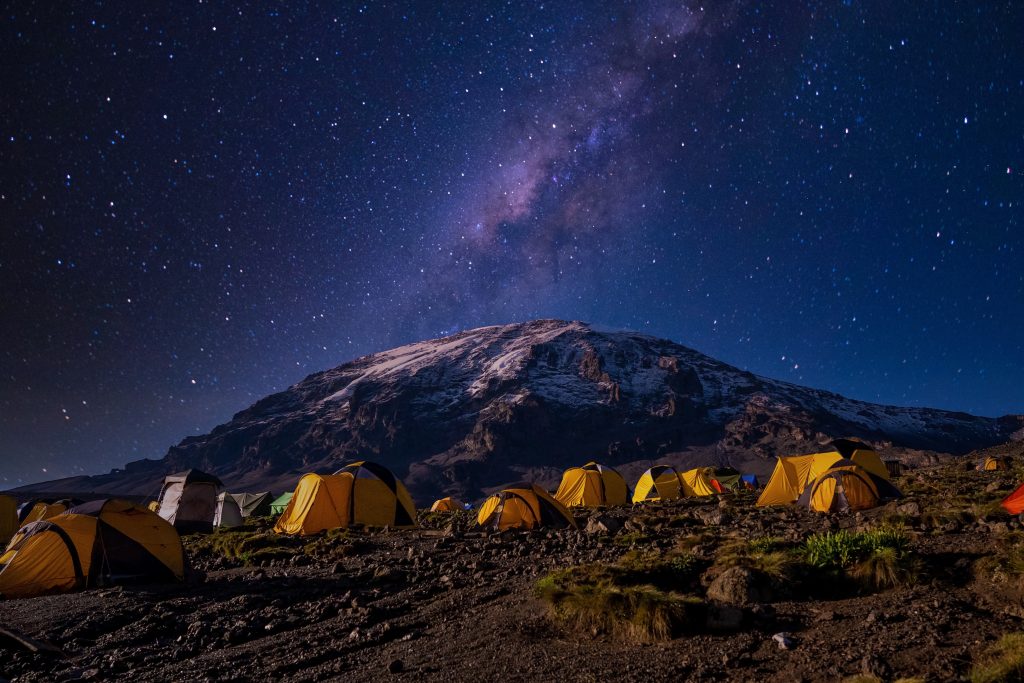
The Ultimate Guide to Climbing Kilimanjaro in February. Kilimanjaro, the majestic “Roof of Africa,” beckons adventurers year-round. But for those seeking ideal conditions and fewer crowds, February presents a golden window for an unforgettable ascent. Let’s explore why this month might be your perfect Kilimanjaro moment. Basking in Sunny Skies: While Kilimanjaro experiences various climates, February falls within the dry season, offering clear skies, sunshine, and minimal rainfall. Imagine trekking under warm African rays, enjoying panoramic vistas unobscured by clouds, and witnessing breathtaking sunrises and sunsets paint the sky. Ideal Weather Conditions: February is characterized by relatively dry weather on Mount Kilimanjaro, creating favorable conditions for climbers. Daytime temperatures range from 50°F to 75°F (10°C to 24°C) at lower elevations, providing comfortable trekking conditions. However, as you ascend, temperatures can drop significantly, emphasizing the importance of proper layering and cold-weather gear. Fewer Fellow Climbers: Compared to peak season months, February sees a significant decrease in trekkers. This translates to a more serene and peaceful experience on the mountain, allowing you to truly connect with the landscape and appreciate the tranquility. Imagine having more space at camps, enjoying quieter trails, and summiting without feeling crowded. Comfortable Temperatures: Although Kilimanjaro remains cold at higher altitudes, February boasts warmer temperatures compared to other months. Expect pleasant days and slightly chilly nights, making the trek more manageable and allowing you to focus on enjoying the journey. Ideal Snow Conditions While snow can be challenging, February often delivers the perfect balance. Expect sufficient snow on the summit for a magical wintery experience without hindering your climb. Imagine witnessing the iconic peak adorned in white while enjoying good traction on the trails. Preparation is Key Remember, Kilimanjaro demands respect and thorough preparation. Pack warm layers for higher altitudes, sturdy boots, and proper rain gear for occasional showers. Choose a reputable guide familiar with February conditions and prioritize your safety throughout the climb. Is February Right for You? If you dream of climbing Kilimanjaro with comfortable temperatures, clear skies, and fewer crowds, February might be your perfect match. However, it’s essential to consider your fitness level, experience, and tolerance for colder conditions. Gear Essentials: Packing the right gear is crucial for a successful Kilimanjaro expedition. In February, temperatures may vary, so it’s essential to pack layers, a high-quality sleeping bag, sturdy hiking boots, and other necessary equipment. Adequate preparation and the right gear ensure you stay comfortable and safe throughout the ascent. Embrace the Adventure: Climbing Kilimanjaro in February offers a unique blend of challenge and reward. Experience the thrill of conquering the “Roof of Africa” under ideal conditions, forge deep connections with the landscape, and create memories that will last a lifetime. So, if you’re ready for an unforgettable adventure, February might just be your golden window to Kilimanjaro’s summit. When is the best time to visit Tanzania? Why visit Tanzania, what are the major attractions? How much does a Tanzania safari cost? How is the wildlife viewing in Tanzania? How safe is Tanzania for tourists? How do I select a reliable Tanzanian tour operator? What type of accommodation can I expect? What can I expect from a safari in Tanzania?
Climbing Kilimanjaro in March
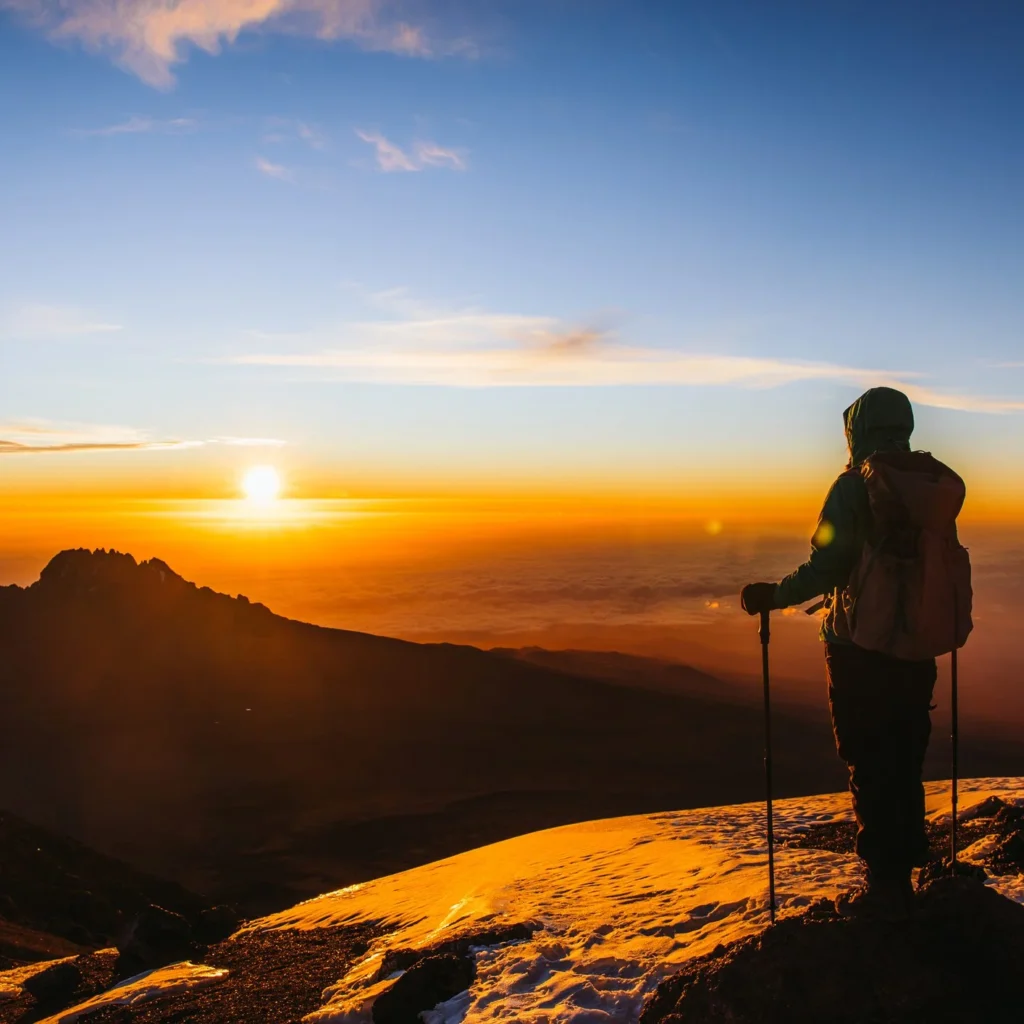
Prepare for an Epic Journey: Climb Kilimanjaro in March. Kilimanjaro, the mighty “Roof of Africa,” beckons intrepid trekkers year-round. But what about March, the transition month between dry and wet seasons? It presents a double-edged sword for climbers: lingering rains and mud versus the potential for fewer crowds and lower costs. So, is March madness a recipe for summit success or a treacherous gamble? Navigating the Murky Waters March marks the gradual descent into the long rainy season. Expect sporadic showers, muddy trails, and unpredictable weather. While not as intense as the peak rainy months, these conditions can test your balance, endurance, and patience. Pack waterproof gear, sturdy boots with good traction, and a positive attitude—you’ll need it all. Silver Linings in the Clouds The rains also bring certain advantages. Imagine lush vegetation, cascading waterfalls, and a mystical aura surrounding the mountain. You might even encounter fewer crowds, enjoying a more intimate and introspective experience. Additionally, lower costs compared to peak season might be an attractive factor for budget-conscious adventurers. A Test of Adaptability March demands flexibility and adaptability. Be prepared for rapid weather changes, adjusting your pace and gear accordingly. Listen to your body, prioritize safety, and don’t hesitate to turn back if conditions worsen. Choosing a reputable guide experienced in navigating March’s caprices is crucial. Choosing Your Route Wisely The Rongai Route on the drier northern slopes receives slightly less rainfall, but consult with experienced operators for real-time updates and recommended routes based on the specific weather conditions. March: Right for You? Conquering Kilimanjaro in March requires honesty about your experience and risk tolerance. Are you a seasoned trekker comfortable with challenging conditions and uncertain outcomes? Do you prioritize cost-effectiveness and a unique experience over clear skies and guaranteed summit success? If so, March might be your Kilimanjaro calling. But if predictability and comfort are paramount, consider drier months. Kilimanjaro Weather Conditions in March March heralds the end of the short rains in the Kilimanjaro region, resulting in relatively dry and clear weather. Climbers can expect lower precipitation, with mild daytime temperatures ranging between 50°F to 75°F (10°C to 24°C) at lower elevations. However, temperatures drop significantly as you ascend, requiring proper gear to combat the cold at higher altitudes. Wildlife Encounters Kilimanjaro is not only a test of physical endurance but also an opportunity to witness unique flora and fauna. March offers a chance to encounter wildlife such as colobus monkeys, antelopes, and a variety of bird species along the lower slopes. These encounters add an extra layer of excitement to the climb, creating unforgettable memories. Kilimanjaro Packing Essentials in March Packing for a Kilimanjaro expedition involves careful consideration of essentials such as layered clothing, a good quality sleeping bag, comfortable hiking boots, and a reliable backpack. March temperatures may vary, so packing versatile clothing options is key to staying comfortable throughout the climb. Remember: Climbing Kilimanjaro in March Thorough research and preparation are crucial for a safe and potentially successful March climb.Choose a highly experienced and reputable operator specializing in shoulder season treks.Be flexible and adaptable – weather conditions can change rapidly.Prioritize safety and turn back if necessary.March’s Kilimanjaro climb might not be a walk in the park, but for the prepared and adventurous soul, it offers a unique blend of challenge, reward, and an intimate encounter with the majestic “Roof of Africa.”
Climbing Kilimanjaro in April
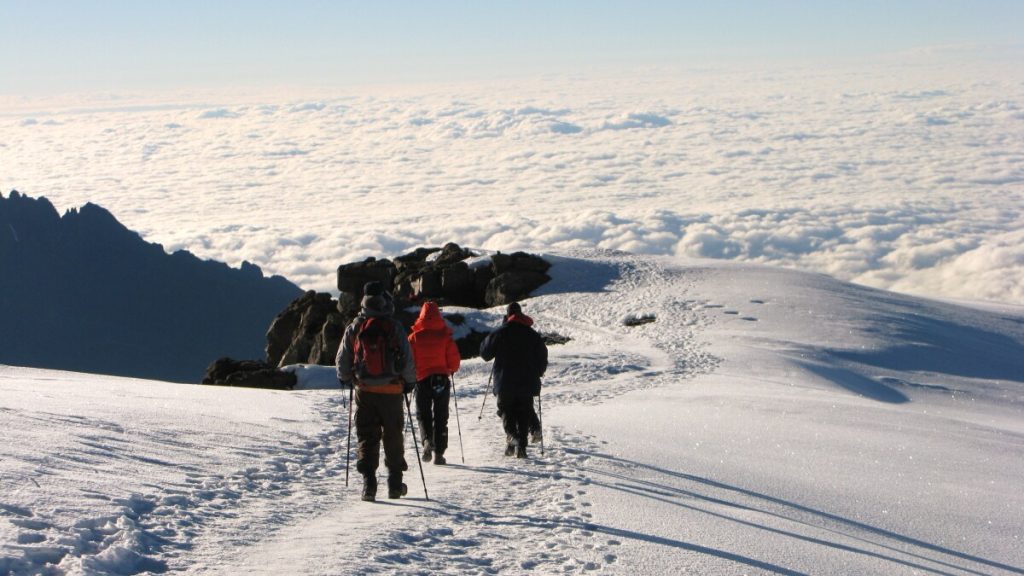
Preparing for Rainy Season Adventures on Mt. Kilimanjaro in April. Braving the Elements: Climbing Kilimanjaro in the Heart of the Rainy Season. Kilimanjaro, the “Roof of Africa,” attracts hikers worldwide with its diverse landscapes and the ultimate summit reward. But what about venturing there in April, the peak of the wet season? While not for everyone, it presents a unique challenge for experienced trekkers seeking an unconventional and potentially rewarding adventure. Embracing the Downpour: April unleashes Kilimanjaro’s full rainy fury. Imagine navigating slippery slopes, battling persistent showers, and facing muddy paths. Visibility might be limited, obscuring the stunning scenery but offering a more intimate and introspective experience. Be prepared with waterproof gear, sturdy boots, and an indomitable spirit. The Untamed Beauty: April unveils a different side of Kilimanjaro. Lush vegetation thrives, waterfalls cascade down slopes, and mist-shrouded landscapes create a mysterious and dramatic ambiance. Witnessing the mountain in its untamed state can be incredibly rewarding, even if the iconic views are temporarily hidden. A Solitary Ascent: Forget the crowds – April is Kilimanjaro at its quietest. Enjoy the solitude and tranquility of the mountain, forging a deeper connection with the environment and yourself. This unique experience allows for reflection and appreciation of the raw power of nature. Testing Your Limits: April demands exceptional physical and mental resilience. Expect colder temperatures at higher altitudes, muddy terrain that saps energy, and the constant challenge of battling the elements. But remember, the reward is immense – the satisfaction of conquering Kilimanjaro under the most demanding conditions. Altitude Considerations: Kilimanjaro’s higher elevations pose additional challenges, including lower temperatures and reduced oxygen levels. Climbers should be aware of the symptoms of altitude sickness and take the necessary precautions, such as acclimatization days.April climbers may experience more snow and ice on the upper reaches of the mountain compared to the dry season, adding an extra layer of challenge to the ascent. Choosing Your Route Wisely: The Rongai Route on the drier northern slopes might be a better option compared to others. However, consult experienced operators for the latest weather conditions and route recommendations. Kilimanjaro Weather Conditions in April: April marks the end of the wet season on Mount Kilimanjaro, presenting a transition between the long rains and the upcoming dry season. While this might deter some climbers, it opens up a unique opportunity for those seeking a different perspective. The landscape is lush and green, with fewer climbers on the trails, providing a more serene and intimate experience. At lower altitudes (around the base of the mountain), temperatures are relatively mild, ranging from approximately 70°F to 80°F (21°C to 27°C) during the day.As climbers ascend, temperatures gradually decrease. At higher altitudes, especially during the nights and early mornings, temperatures can drop significantly, ranging from 20°F to 30°F (-6°C to -1°C). Is April Right for You? Climbing Kilimanjaro in April is an extreme adventure, not a vacation. It demands exceptional fitness, unwavering mental strength, and a true adventurous spirit. If you prioritize pushing your limits, embracing challenges, and experiencing Kilimanjaro in its rawest form, April might be your calling. But if clear skies, comfortable conditions, and summit success rates are paramount, consider drier months. Remember: Kilimanjaro Climbing in April Thorough research and preparation are crucial for a safe and potentially successful April climb.Choose a highly experienced and reputable operator who specializes in rainy season treks.Be flexible and adaptable – weather conditions can change rapidly.Prioritize safety and turn back if necessary.April’s Kilimanjaro climb might be far from easy, but for the intrepid adventurer, it offers an unforgettable journey of self-discovery, resilience, and a unique connection with the “Roof of Africa.”
Climbing Kilimanjaro in May

Tackle Kilimanjaro in May: Be Prepared for the Downpour. Get at top of Kilimanjaro, the “Roof of Africa,” beckons adventurers with its majestic peak and diverse landscapes. But what about tackling this behemoth in May, during the notorious rainy season? While it’s not the most conventional choice, May presents a unique opportunity for experienced trekkers seeking a challenging and less crowded ascent. Facing the Downpour: May throws down the gauntlet with frequent rainfall and muddy trails. Imagine slogging through slippery paths, battling the elements, and pushing your physical limits. Be prepared for reduced visibility, obscuring the breathtaking panoramas Kilimanjaro offers. Pack wisely: waterproof gear, sturdy boots, and a positive attitude are essential companions. The Advantages of Solitude: May’s biggest selling point? Fewer crowds. Enjoy the tranquility of the mountain, with fewer fellow trekkers vying for space at campsites or summiting alongside you. This intimate experience allows for deeper connection with the environment and yourself. A Test of Grit: May’s challenging conditions demand increased physical and mental resilience. Be prepared for colder temperatures, especially at higher altitudes. Expect greater exertion navigating muddy terrain and battling the elements. But remember, the reward is immense – the satisfaction of conquering Kilimanjaro under unconventional circumstances. Choosing Your Route Wisely: Not all routes are created equal in the rainy season. The Rongai Route, located on the drier northern slopes, receives slightly less rainfall compared to others. However, consult experienced operators for the latest weather conditions and route recommendations. Is May Right for You? Climbing Kilimanjaro in May is not for the faint of heart. It demands exceptional physical fitness, adaptability, and a thirst for adventure. If you prioritize avoiding crowds and relish a challenge, May might be your Kilimanjaro calling. But if clear skies and comfortable conditions are paramount, consider drier months. Climbing Kilimanjaro in May is generally not recommended due to several factors: Heavy Rainfall: May falls right in the middle of the long rainy season on Kilimanjaro, which typically lasts from March to May. This means you’re likely to encounter frequent and heavy downpours, making the trails muddy, slippery, and potentially dangerous. Limited Visibility: The combination of rain and cloud cover can significantly restrict visibility, meaning you might miss out on the stunning scenery and panoramic views that the mountain is known for. Remember: However, if you’re still determined to climb Kilimanjaro in May, here are some things to consider: Thorough research and preparation are crucial for a safe and successful May climb. Choose an experienced and reputable operator who specializes in rainy season treks. Be flexible and adaptable – weather conditions can change rapidly. Prioritize safety and turn back if necessary. Expect lower success rates: Due to the challenging conditions, summit success rates tend to be lower during the rainy season. Choose a reputable guide: Opt for a highly experienced and certified guide who can navigate the challenging conditions safely. May’s Kilimanjaro climb might not be a walk in the park, but for the intrepid adventurer, it offers an unforgettable experience of overcoming challenges and reaching new heights, both literally and figuratively. What is the weather like in Kilimanjaro in May? The long rainy season between March and May is a result of the trade winds from the south-east. These southerly winds from the Indian Ocean are laden with moisture, bringing rain to the lower slopes and snow on the top of Mount Kilimanjaro summit. During this season, the southern slopes get the most rainfall.
Climbing Kilimanjaro in June
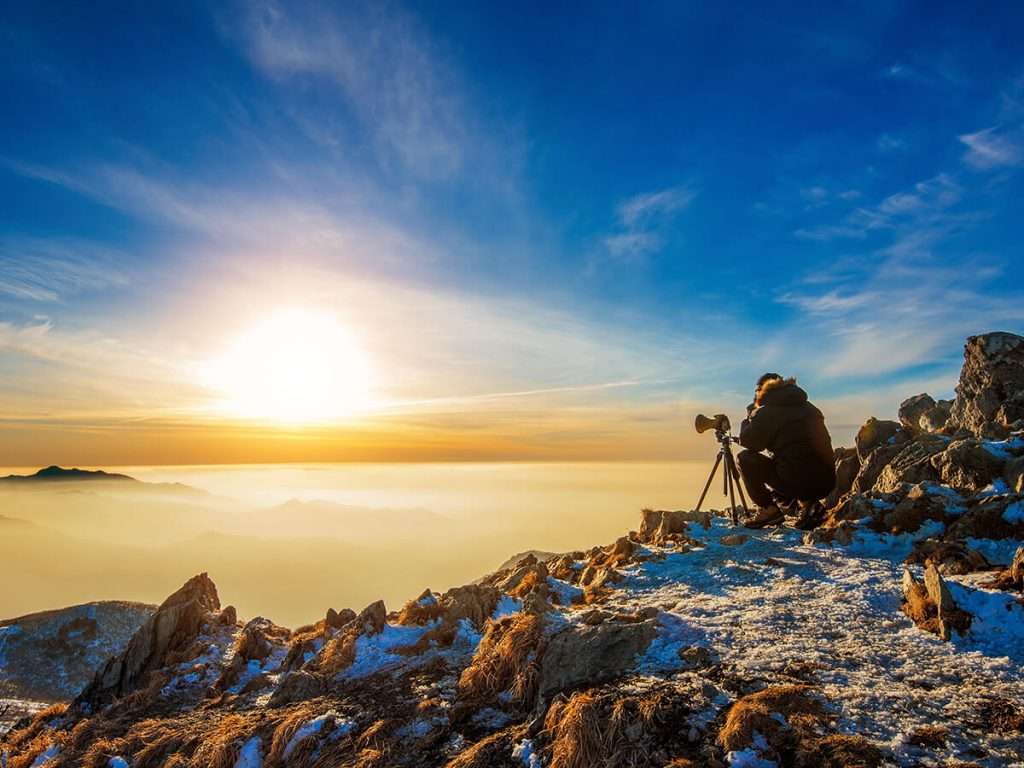
Enjoy a Quieter Trek to Kilimanjaro in June Conquer the Clouds Before the Crowds: Climbing Kilimanjaro in June: Kilimanjaro, the majestic “Roof of Africa,” beckons adventurers year-round. But if you seek warmth, manageable crowds, and the thrill of pioneering the trails, June might be your hidden gem. Here’s why: Sun-Kissed Slopes and Clear Skies: While the tail-end of the rainy season lingers early June, by mid-month, Kilimanjaro basks in the dry season’s glory. Imagine trekking under clear skies, soaking in the panoramic views without rain blurring the picture. Sunsets paint the landscape in fiery hues, and stargazing at night unveils a mesmerizing celestial panorama. Fewer Crowds, More Solitude: Unlike the bustling peak season of July and August, June offers a chance to experience Kilimanjaro with fewer fellow climbers. Enjoy quieter campsites, less congestion on the trails, and a more intimate connection with the mountain’s raw beauty. Imagine having the summit crater almost to yourself – a truly unparalleled experience. A Pleasant Start, a Chilling Finish: June welcomes you with warm temperatures at the base, averaging around 70°F (21°C). This allows for comfortable acclimatization as you ascend. However, remember, Kilimanjaro wears many climatic hats. Pack for the dramatic drop in temperature as you reach higher altitudes, where nights can dip below freezing. Muddy Patches and Potential Showers: While the rains generally subside by June, remnants can linger. Be prepared for potentially muddy sections on the trails, especially early in the month. Pack waterproof boots and gaiters to navigate these patches with ease. Light rain showers are also a possibility, adding a touch of adventure to your climb. The Shoulder Season Advantage: Climbing in June allows you to avoid the permit price hikes that occur during peak season. You might also find better deals on flights and accommodation due to lower demand. Additionally, with fewer climbers, the environmental impact of your trek is minimized. Preparation is Paramount: As with any Kilimanjaro climb, meticulous planning is essential. Ensure you have the necessary permits, proper gear for diverse weather conditions, and peak physical fitness. Consider hiring a guide, especially if you’re a first-time climber, for invaluable expertise and safety support. Embrace the Pioneering Spirit: June might not be the easiest month to climb Kilimanjaro, but it offers a unique blend of challenges and rewards. You’ll be part of a smaller group, paving the way for the peak season with each step. The journey will test your resilience, but the reward of standing on the summit, bathed in the warm June sun, will be etched in your memory forever. Can you climb Kilimanjaro in the summer? Climbing Kilimanjaro in June/ July/ August and September: A combination of the best weather and the US and Europe summer vacations means this is the main climbing season and the busiest time on the mountain. So, if you’re looking for an adventure off the beaten path, with the allure of manageable crowds and comfortable temperatures, consider conquering Kilimanjaro in June. Remember, the mountain awaits those who dare to embrace the challenge. With the right preparation and a thirst for adventure, you’ll be well on your way to claiming your own piece of the “Roof of Africa.”
Climbing Kilimanjaro in July

Kilimanjaro Climbing in July’s Warm Embrace. For mountain enthusiasts, the majestic peak of Kilimanjaro beckons like a siren song. And while reaching the summit is an accomplishment year-round, July presents a unique set of advantages for those seeking the perfect blend of weather, accessibility, and stunning scenery. Let’s delve into the world of climbing Kilimanjaro in July, exploring its pros, cons, and what to expect as you embark on this epic journey. Sunny Skies and Clear Views: Bid farewell to the worries of rain and snow. July falls squarely within Kilimanjaro’s dry season, boasting clear skies and minimal precipitation. This translates to drier trails, less risk of flash floods, and unobstructed vistas of the breathtaking landscape. Imagine sunrise painting the summit gold, or gazing across the endless plains bathed in the warm glow of the African sun – experiences unparalleled in the rainy months. Warmth at Lower Altitudes: The climb begins in balmy temperatures, with averages hovering around 70°F (21°C) at the base. This provides a comfortable start, allowing your body to gradually acclimatize to the thinning air as you ascend. However, remember, Kilimanjaro is a microcosm of climates; pack for the drastic drop in temperature as you reach higher altitudes. The Peak Season Buzz: July is undeniably the busiest month on Kilimanjaro. While this means sharing the trails with fellow adventurers, it also fosters a vibrant atmosphere of camaraderie and shared purpose. You’ll be surrounded by climbers from all walks of life, each with their own story to tell, creating a unique sense of community on the mountain. Navigating the Crowds: The flip side of popularity is congestion. Be prepared for potential delays on busy sections of the trail, especially on summit day. Choosing a less frequented route like the Rongai or Lemosho can offer a more secluded experience. Additionally, booking your climb with a reputable operator who limits group sizes can ensure a more personalized journey. July is a great month to climb Kilimanjaro. Yes, you will find more people on the mountain due to the better conditions you will find. The weather can be colder higher up, however the colder temps usually have great mountain views, less rain in the rain forest and all around good mountain climbing conditions. Dusty Encounters: The dry season comes with its own set of challenges. As the winds pick up, prepare for encounters with dust, especially on exposed sections. A buff or bandana will be your best friend, shielding your face and keeping your lungs clear. Planning is Key: Remember, Kilimanjaro is not a casual hike. Regardless of the month, meticulous planning is crucial. Ensure you have the necessary permits, gear for all weather conditions, and most importantly, peak physical fitness. Consider hiring a guide, especially if you’re a first-time climber, as their expertise can make a world of difference. Embrace the Challenge: Climbing Kilimanjaro in July is more than just reaching a summit; it’s a journey of self-discovery, pushing your limits amidst breathtaking scenery. By understanding the unique opportunities and challenges this month presents, you can prepare for an unforgettable experience, returning with memories that will forever be etched in your soul. So, if you’re considering conquering Kilimanjaro, and the allure of warm weather and clear skies resonates with you, July might just be the perfect time to embark on this life-changing adventure. Remember, the mountain awaits, and with proper planning and a spirit of adventure, you’ll be well on your way to conquering the “Roof of Africa.” Is July a good time to climb Kilimanjaro? Why is July a Good Time to Summit Mount Kilimanjaro? July signifies the start of holidays and vacations for many across North America and Europe, making it the perfect time to visit Africa, where the weather is ideal for climbing Kilimanjaro. When not to climb Kilimanjaro? The long rainy season starts at the end of March and continues through to early June. We do not recommend climbing Kilimanjaro during this time, as the trails can be very wet, muddy and snowy. Climbing in the rain is likely to be less enjoyable and means you’ll miss out on the spectacular views and photo opportunities. Is there snow on Kilimanjaro in July? Snow on Kilimanjaro can occur all year round, but the most common months are November through March. Here is a chart showing average snowfall by month. What degree sleeping bag do I need for Kilimanjaro? Night time temperatures here hover freezing, but can be much cold, as Kilimanjaro’s weather is volatile and unpredictable. We recommend getting a sleeping bag with a temperature rating of 0F/-18C or warmer (-20F/-29C). Someone who sleeps warm can use a bag with a higher temperature rating than someone who sleeps cold. How do you go to the toilet on Kilimanjaro? There are no commodes in the public toilets. You relieve yourself in a hole cut into the bottom of the shack in a standing or squatting position. Given the crowds on Kilimanjaro, these public toilets see a lot of use and therefore can get rather dirty. You can smell the stench from a distance. Is Kilimanjaro overcrowded? Between 30,000 to 50,000 people climb Kilimanjaro annually, most of whom visit during the dry seasons. These dry seasons total 7 out of 12 months. If we divide the number of visitors by 7 months, we get an average of 4,285 to 7,124 people per month. What do you wear to bed on Kilimanjaro? A warm base layer (top and bottom) and a clean pair of socks can make all the difference to your comfort. At the higher camps you’ll most likely be wearing more than one layer. Sleep in a warm hat, as much of your body heat is lost through your head. Do you need waterproof pants for Kilimanjaro? We recommend a pair of warm fleece pants or a track suit pant. You will only need one pair. Waterproof Pant: You will need to have one pair of waterproof pants that can be worn over your trekking pant in
